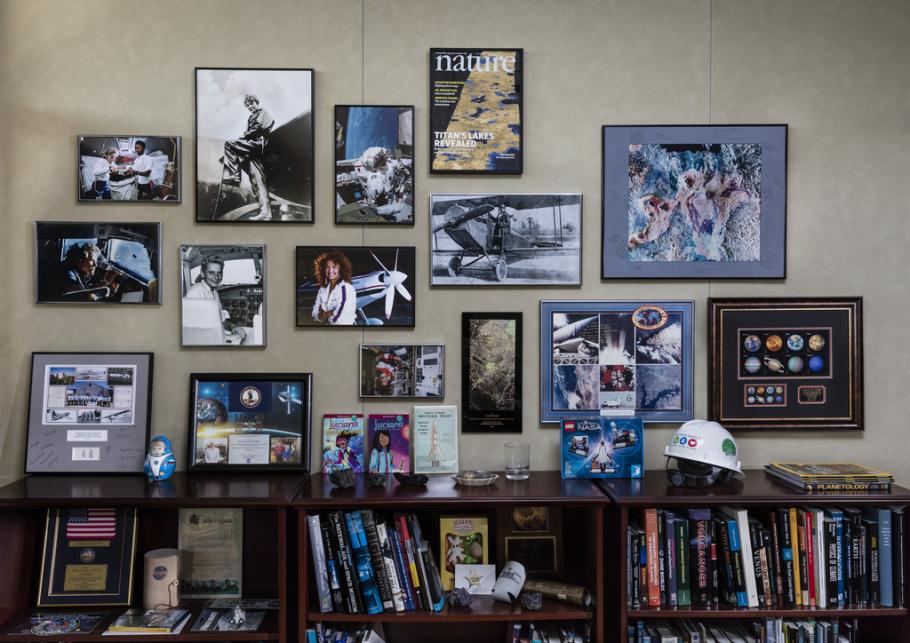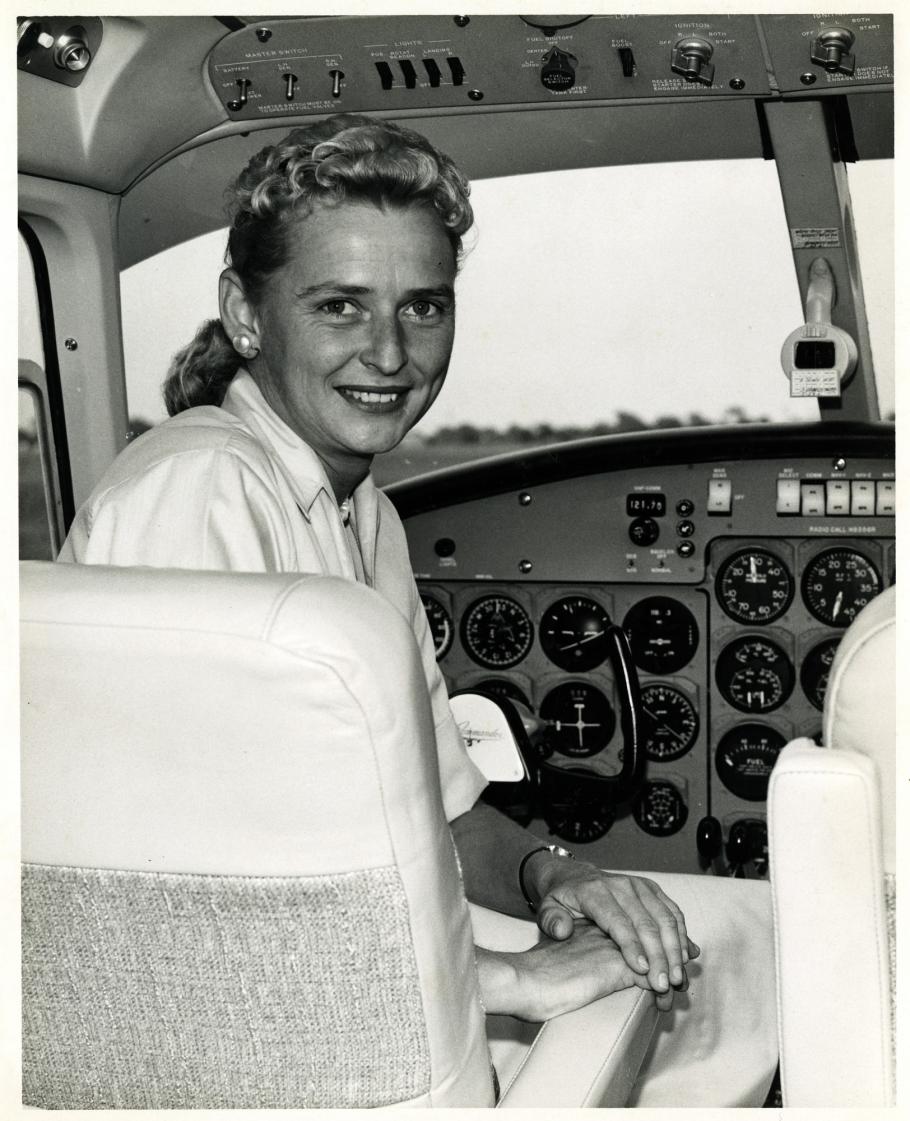
Women Who Defy
Mar 26, 2019
By Ellen R. Stofan, PhD
At the National Air and Space Museum, we tell stories of aviation and spaceflight that often begin with improbable dreams, overwhelming odds, or limited expectations. While our visitors marvel at the accomplishments we celebrate in our halls, the chance for inspiration doesn’t stop there. It’s also in the character of the thinkers, dreamers, and pioneers whose ideas persevere despite setbacks and barriers.
In short, we tell the stories of ideas that defy: Ideas that defy preconceptions. Ideas that defy conventional wisdom. Ideas that defy odds.
But with the launch of the Smithsonian Women’s Initiative #BecauseOfHerStory campaign this month, I realized we could take that concept a step further. We tell stories of women who defy. Women who were told there wasn’t a place for them in aviation and space, and stared right back and said, “Yes there is.”
Every female first is a beacon to young women around the world that there is a place for them in that industry, that job, or that opportunity.
In my office at the Museum, I have a wall of photographs that celebrates some of the groundbreaking women who inspire me. After I discussed the wall during an interview on the Today show, many have asked to learn more about the women featured, so I wanted to share some of their stories with you.
In a time before women were “supposed” to fly airplanes, before Amelia Earhart flew solo across the Atlantic, Bessie Coleman was flying loops through multiple glass ceilings. She dreamed of being a pilot, but American flight schools didn’t admit African Americans or women. She didn’t let that stop her from achieving her goals. In 1920, Bessie moved to Paris, France, to learn to fly. And as a result of her tenacity, she became the first African American woman to earn a pilot’s license. When she returned to the U.S., she took up barnstorming, performing stunts at aviation shows. And even as she worked to make a name for herself, she stood up for what she believed in, defying expectations in the process: In an era of intense racial prejudice and Jim Crow laws, Bessie would only perform in exhibition shows if the crowds were desegregated.
We see this time and again in the stories we tell at Air and Space.
Geraldyn “Jerrie” Cobb was a skilled pilot who set three world aviation records and went on to become of the few women executives in aviation at the time. In the early 1960s, she underwent the same physical tests as the original Mercury astronauts as part of the Lovelace Women in Space program. Jerrie underwent the same rigorous testing program NASA used to select astronauts, passing all the training exercises and ranking in the top two percent of all astronaut candidates. After the program ended, she worked as a consultant to NASA on the future development of women as astronauts.
It didn’t happen during Jerrie’s time at NASA, but in the late seventies, six women were finally admitted to the new astronaut class. Among them was the first American woman to go to space, Sally Ride, and Kathryn Sullivan, the first American woman to perform a spacewalk, or extra-vehicular activity. I have had the honor to get to know Kathy in the years since that milestone moment, including during her time as administrator of the National Oceanic and Atmospheric Administration (NOAA). She continues to inspire me with her dedication to understanding and protecting our home planet.
After witnessing the first class of female astronauts, as well as the flight of Guy Bluford, the first African American man in space, physician Mae Jemison realized that there might be a place for her in space after all. She was accepted to the astronaut program in 1987 and became the first African American woman in space in 1992. She continued her career in science after leaving NASA, and has been a champion for women and minorities in STEM.
The photographs on my wall remind me every day that telling the stories of the inspiring women who defied preconceptions and expectations is of fundamental importance to the museum’s mission of inspiring the next generation of innovators and explorers. Every female first is a beacon to young women around the world that there is a place for them in that industry, that job, or that opportunity. The women on my wall represent just a few of the women who showed that talent is everywhere – but opportunity is not. It all comes back to the preconceptions we refuse to accept, and the women who defied them.
Related Topics
You may also like
We rely on the generous support of donors, sponsors, members, and other benefactors to share the history and impact of aviation and spaceflight, educate the public, and inspire future generations. With your help, we can continue to preserve and safeguard the world’s most comprehensive collection of artifacts representing the great achievements of flight and space exploration.





